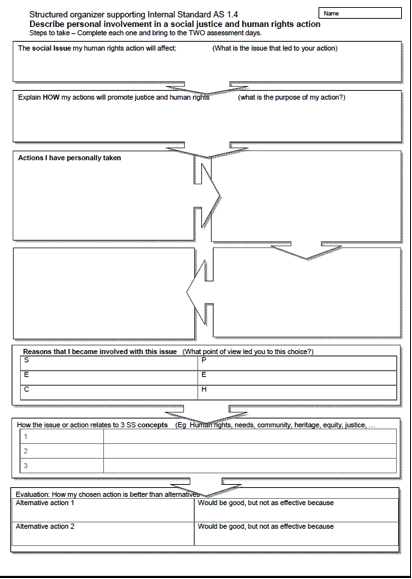Align experiences to important outcome
Alignment involves creating a convergence between the learning experiences you will provide and the purpose of the learning.
Prior knowledge |
Guides |
Opportunities to engage
It happens best when:
- prior knowledge is identified
- the purpose of the learning episode is clear
- there is more than one opportunity to engage with the information
- the learning sequence is logical and consistent.
Here are some ways to increase alignment in senior social studies.
Prior knowledge
‘Learners make sense of new information by relating it to concepts and ideas in their long-term memory.’
(BES, p. 83)
This applies equally to students and teachers. In senior social studies identifying prior knowledge can occur through interviews, conversations with learners, pre- and post tests or through questionnaires seeking interest areas and surveys.
Teacher knowledge of content and understandings of concepts are important, and a lack of knowledge can frustrate learning. For example, in the BES (p. 89), Kunowski found that teachers who had not mastered the content of a Treaty of Waitangi unit made errors of information; were less able to illustrate and explain ideas and events using stories and examples; and attempted to simplify material in ways that led sometimes to misinterpretation and superficial student responses. The teachers were also less confident in dealing with the contentious nature of the subject, expressing the desire to avoid 'becoming too controversial or politicising the topic' (BES, p. 89).
Structured guides
Templates, planning and writing guides, and structured overviews are helpful in developing students’ understanding and ability to communicate knowledge in written form (see BES, p.108). They help provide a clear sequence, show the teacher’s ideas on the most important elements, and reveal the relationships of the parts.
Templates are particularly valuable in scaffolding for assessments, especially with clear identification of the more complex social studies terminology such as concepts, values, perspectives, or world views and consequences.
Here is an example of a structured organiser for use with NCEA Level 1.4 social action: Describe personal involvement in a social justice and human rights action.

Structured organiser
It could be used in the planning stages to support students' understanding of all the key requirements before selecting their action, and would naturally lead to inquiry questions to guide their next steps.
TOP
Create a range of opportunities to engage with resources and ideas
The BES suggests students need three to five aligned experiences not more than two days apart to remember an idea or concept (BES, p. 112).
With unfamiliar material, it is no surprise that many will not ‘get it’ with just one exposure. In a senior social studies class this could mean planning group work to discuss controversial issues in order to promote the development of the key competencies of relating to others. In the process of planning, they are engaging with the material, considering relevant past learning and sharing diverse ideas or experiences within the group.
There are numerous sources for controversial issues, including downloadable video clips from TV and the web. Online newspapers contain comment, cartoons, photos and blogs, rich with opinion and revealing values and perspectives. By approaching new ideas from a range of perspectives, students will gain confidence in their understanding.
Last updated September 14, 2011
TOP


